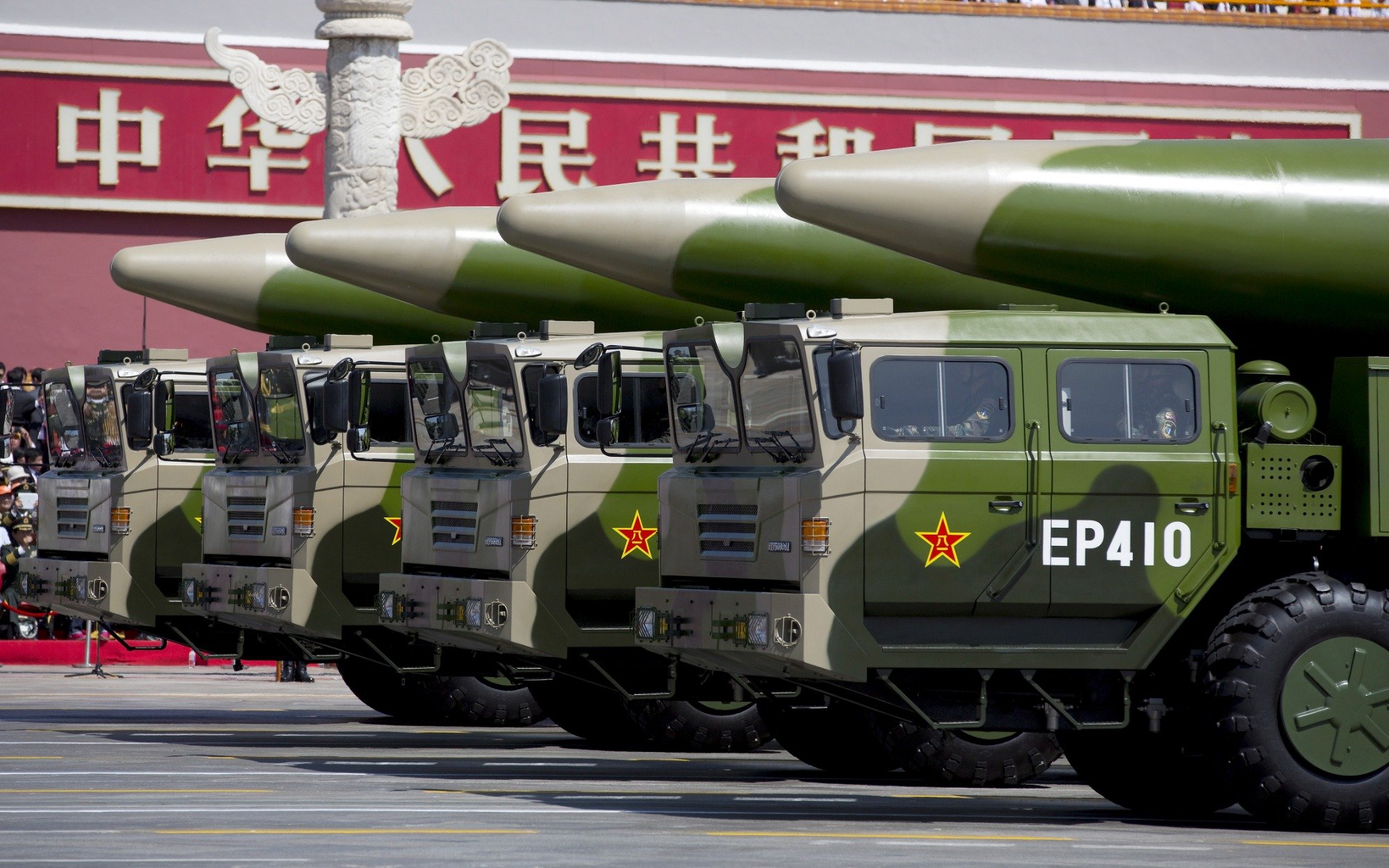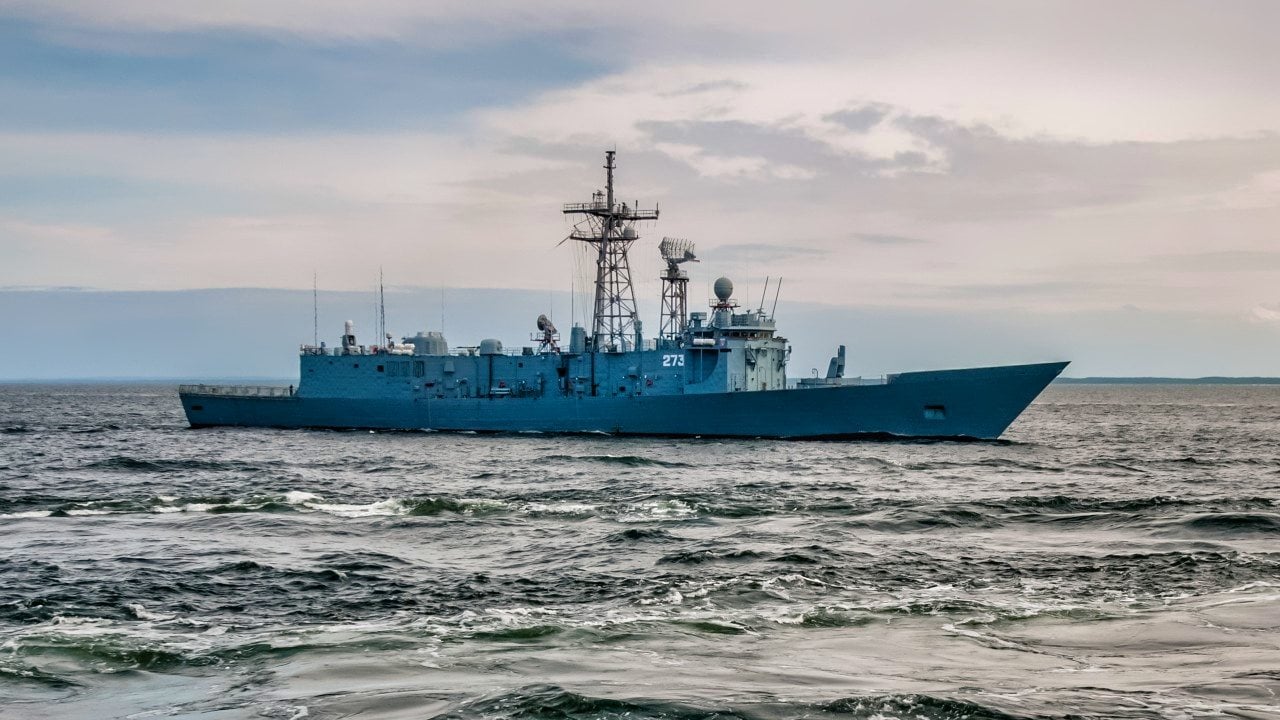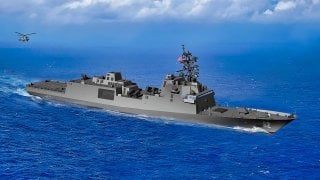The U.S. Navy’s Constellation-Class Frigate Nightmare Is Just Getting Started
The U.S. Navy's Constellation-class frigate program, designed to replace the aging Oliver Hazard Perry-class frigates, is facing significant complications due to design changes and bureaucratic miscommunications.
Summary and Key Points: The U.S. Navy's Constellation-class frigate program, designed to replace the aging Oliver Hazard Perry-class frigates, is facing significant complications due to design changes and bureaucratic miscommunications.

-Built by Fincantieri Marinette Marine, these frigates are based on the European FREMM design, but modifications requested by the Navy have led to cost overruns and delays.
-Set to debut in 2026, the program's future is uncertain amid budgetary concerns and the evolving nature of naval warfare, which raises questions about the necessity and practicality of these large manned warships in the current strategic environment.
The Navy’s Constellation-class is a Mess
The Constellation-class frigate is a new class of warship being built for the United States Navy. The lead ship of this new class of warship, the USS Constellation (FFG-62), is currently under construction at Fincantieri Marinette Marine in Marinette, Wisconsin. The Constellation-class is based on the European FREMM frigatethat was developed by the Italian shipbuilder, Fincantieri.
Washington’s decision to utilize a foreign shipbuilder, such as Fincantieri, to construct one of the most important vessels coming online for the surface fleet is telling within itself. It indicates that Washington is attempting to increase its naval interoperability with European navies—notably the navies belonging to NATO, which utilize the Fincantieri-built FREMM frigate.
Needless Complications
But that has caused a ridiculous amount of complications, too.
Notably, the US Navy attempted to inject changes to the final design of the Constellation that ultimately ruined what the Italian shipbuilder was creating. In fact, the Navy’s additional requests for the warship, after Financtieri had already started cutting the steel for the warship, jeopardizes the entire program (due to the inevitable cost overruns that will not occur).
The Constellation-class is intended to replace the Navy’s aging Oliver Hazard Perry-class frigates. The Navy plans to procure a total of 20 Constellation-class frigates, with the first ship expected to be delivered in 2026.
Though, again, thanks to the unnecessary complications caused by improper communication between Navy planners and the shipbuilders at Fincantieri, that target date for deployment is unrealistic.
Indeed, the warship has already been delayed once. Given the problems between Washington and Fincantieri, and the looming debt crisis the United States is likely to face soon, the idea that the US leadership (let alone the taxpayers) will be sanguine with this program running overbudget and overtime is low.
But the Navy persists in its plans.
Do We Even Need a New Frigate?
Nevermind that the dawn of unmanned undersea vehicles (UUV) and the rise of advanced anti-access/area-denial (A2/AD) capabilities—notably potent (and cheap) anti-ship ballistic missiles—renders the idea of large manned warships somewhat obsolete. Washington believes that it’s still 1994. All we need do is tweak our procurement processes here, alter our shipbuilding standards there, and the enemies of America will just wait for us to be ready. No adaptation to us by them, let alone by us to them, is needed.

These assumptions, of course, are wrong. Deadly wrong. The French military behaved much the same way in the Interwar Years, leading to complacency and unpreparedness by their armed forces. We know what happened as a result.
Designed as a multi-mission warship capable of conducting anti-submarine warfare (ASW), anti-surface warfare, and anti-air warfare operations, the Constellation-class is clearly borrowing from other Navy programs.
The concept of a plug-and-play warship goes back to the Navy’s (failed) Littoral Combat Ship (LCS) model. It’s akin to being a Jack-of-all-trades-and-master-of-none. Although, it doesn’t sound as though the Navy is as married to that failed notion with the Constellation. One can expect this warship to be a bit more conventional than was the LCS (or the Zumwalt-class destroyer for that matter).
But how conventional or practical, especially in light of the rise of UUVs and A2/AD?
Some Specs
The Constellation is supposed to be equipped with a variety of weapons. These weapons include the MK 41 Vertical Launch System, which can launch both anti-ship and anti-submarine missiles. It can also employ Surface-to-Air Missile (SAM) systems. The SAMs will provide short-range air defense capabilities for a warship that will likely be exposed to serious dangers from the growing arsenals of anti-ship missiles around the world.
In terms of defenses, the Constellation-class is planned to possess the AN/SPY-6(V) radar system, which provides advanced air and missile defense capabilities. This boat is designed to house an AN/SLQ-32(V) Electronic Warfare Suite, providing the warship with electronic support and electronic attack capabilities.
The Constellation-class will be powered by a Combined Diesel-Electric and Gas (CODLAG) propulsion system, which provides increased efficiency and flexibility compared to traditional propulsion systems. The ship’s proposed maximum range is expected to be around 6,000 nautical miles (or 6,904 miles) and her top speed is planned to be 26 knots (or just shy of 30 miles per hour). It’s a fast ship.
On paper.
As noted above (and this author has reported in earlier articles at this site), the Constellation is fraught with bureaucratic SNAFUs that jeopardize the success (and affordability) of this program. It remains to be seen if these woes can be overcome in a realistic and timely way.

Author Experience and Expertise: Brandon J. Weichert
Brandon J. Weichert, a National Interest national security analyst, is a former Congressional staffer and geopolitical analyst who is a contributor at The Washington Times, the Asia Times, and The-Pipeline. He is the author of Winning Space: How America Remains a Superpower, Biohacked: China’s Race to Control Life, and The Shadow War: Iran’s Quest for Supremacy. His next book, A Disaster of Our Own Making: How the West Lost Ukraine, is due October 22 from Encounter Books. Weichert can be followed via Twitter @WeTheBrandon.
All images are Creative Commons or Shutterstock.
From the Vault
Russia Freaked Out: Why the U.S. Navy 'Unretired' the Iowa-Class Battleships
Battleship vs. Battlecruiser: Iowa-Class vs. Russia's Kirov-Class (Who Wins?)


